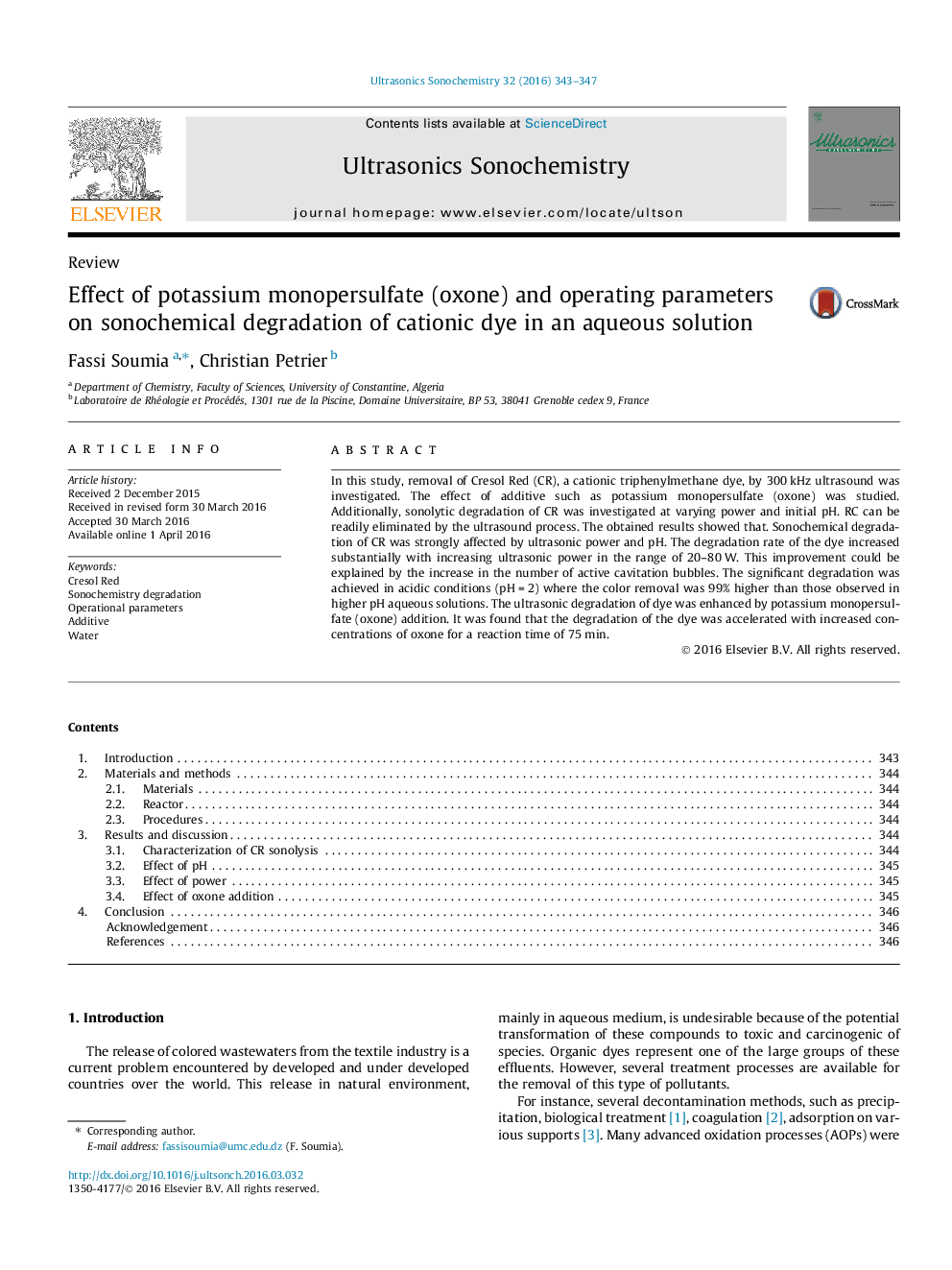| Article ID | Journal | Published Year | Pages | File Type |
|---|---|---|---|---|
| 1269488 | Ultrasonics Sonochemistry | 2016 | 5 Pages |
•Performance of sonolytic degradation of Cresol Red was investigated.•Power and initial pH should be controlled during the ultrasonic treatment of CR.•The sonolytic degradation of CR was drastically improved by the addition of oxone.•The mechanism for the effect of oxone relies on the formation of OH and SO4-.
In this study, removal of Cresol Red (CR), a cationic triphenylmethane dye, by 300 kHz ultrasound was investigated. The effect of additive such as potassium monopersulfate (oxone) was studied. Additionally, sonolytic degradation of CR was investigated at varying power and initial pH. RC can be readily eliminated by the ultrasound process. The obtained results showed that. Sonochemical degradation of CR was strongly affected by ultrasonic power and pH. The degradation rate of the dye increased substantially with increasing ultrasonic power in the range of 20–80 W. This improvement could be explained by the increase in the number of active cavitation bubbles. The significant degradation was achieved in acidic conditions (pH = 2) where the color removal was 99% higher than those observed in higher pH aqueous solutions. The ultrasonic degradation of dye was enhanced by potassium monopersulfate (oxone) addition. It was found that the degradation of the dye was accelerated with increased concentrations of oxone for a reaction time of 75 min.
